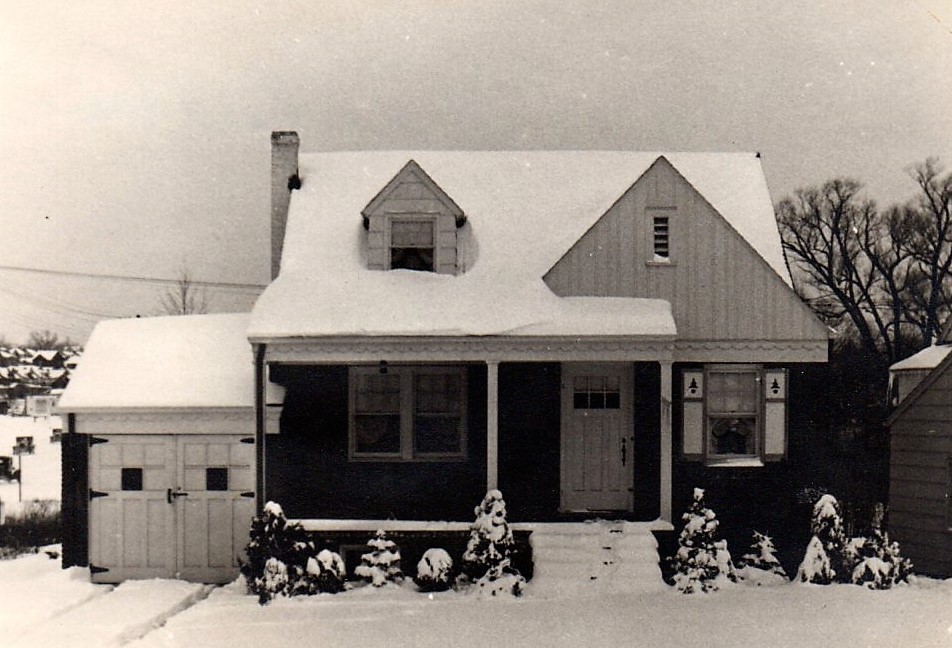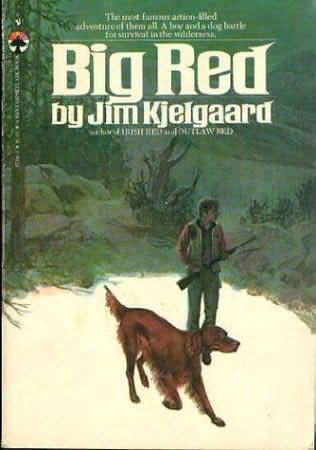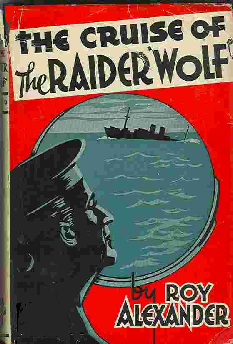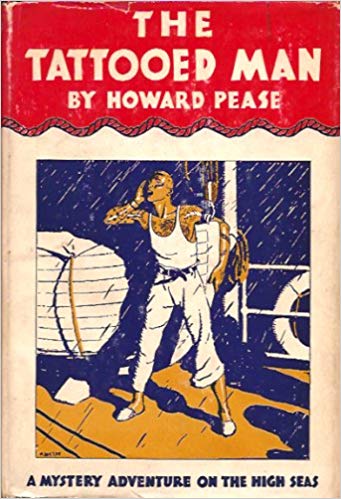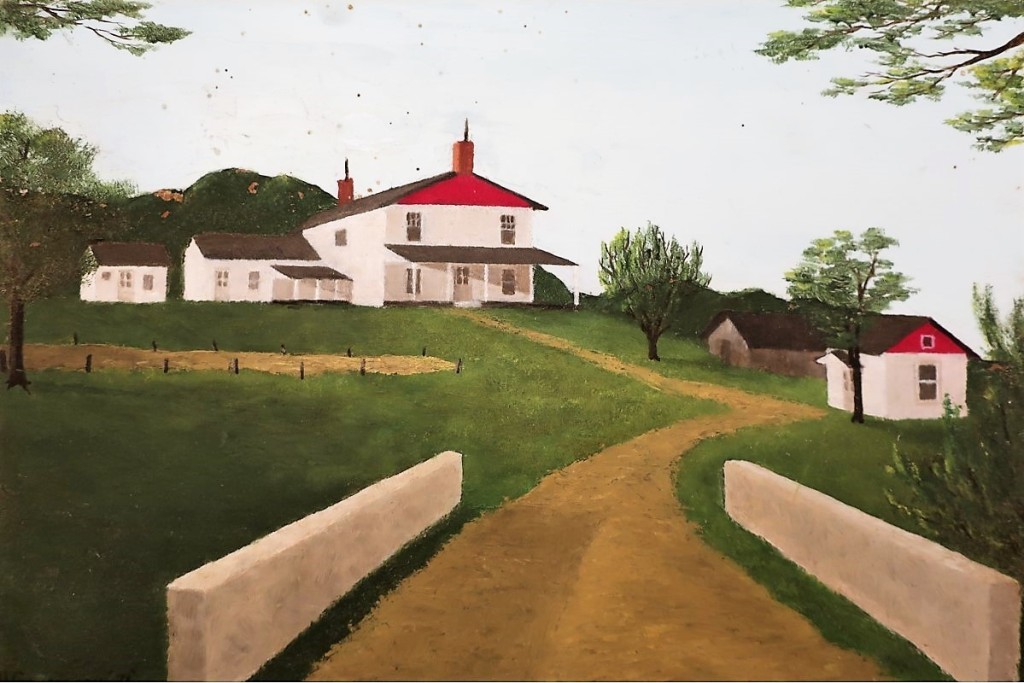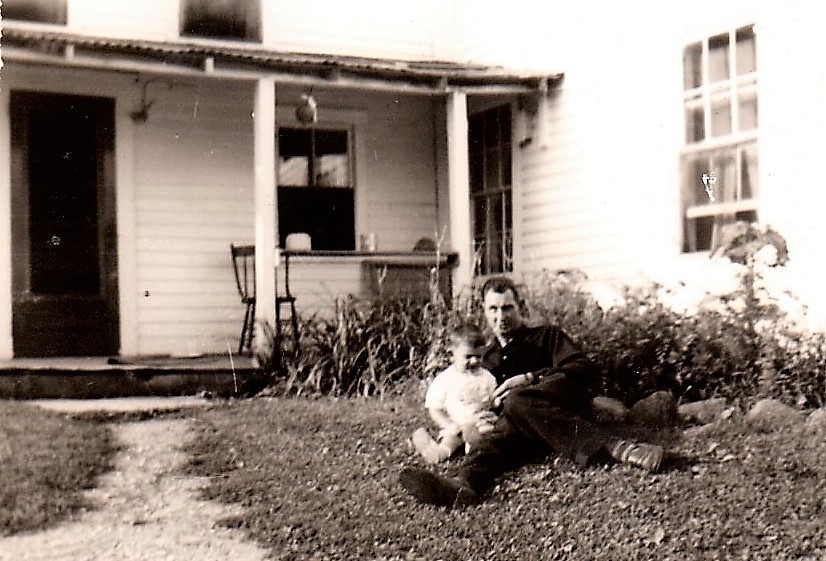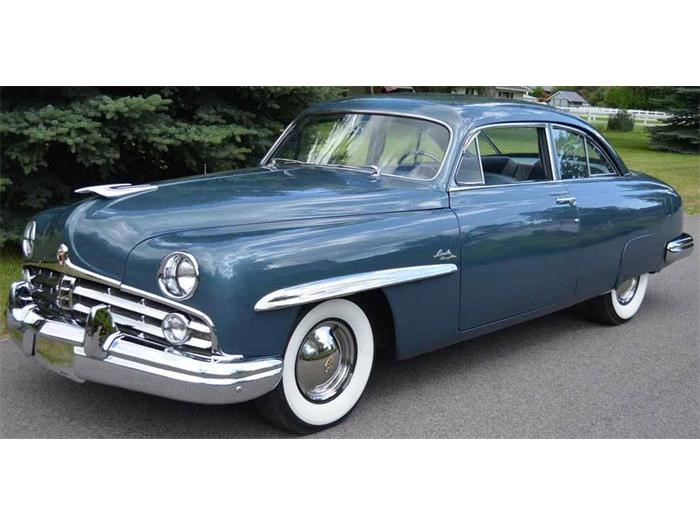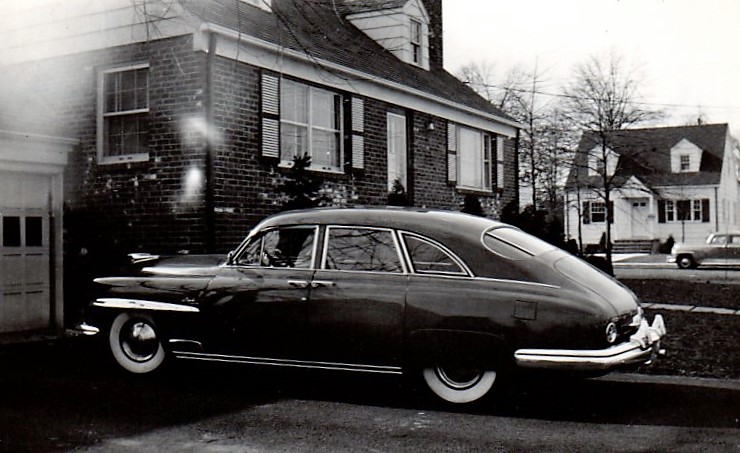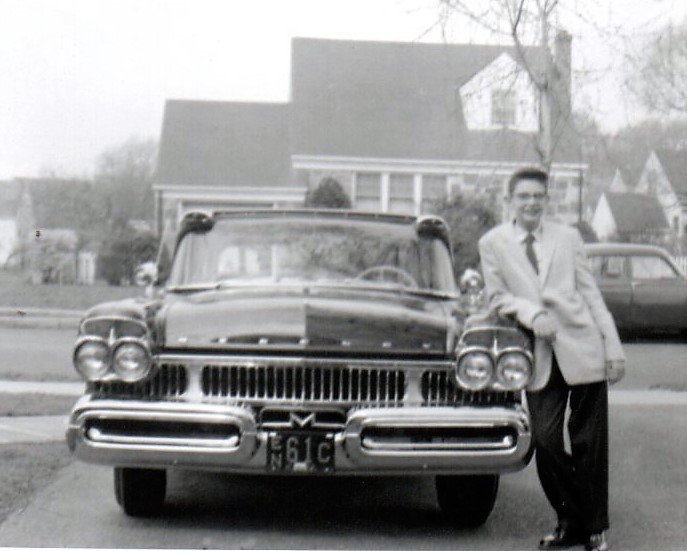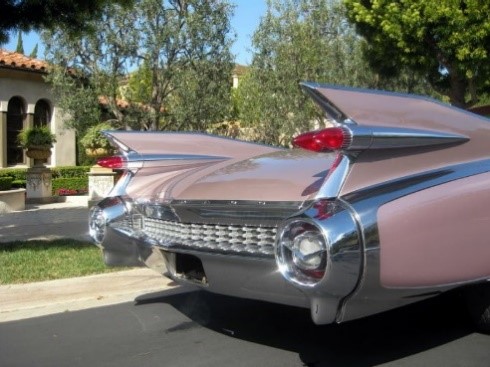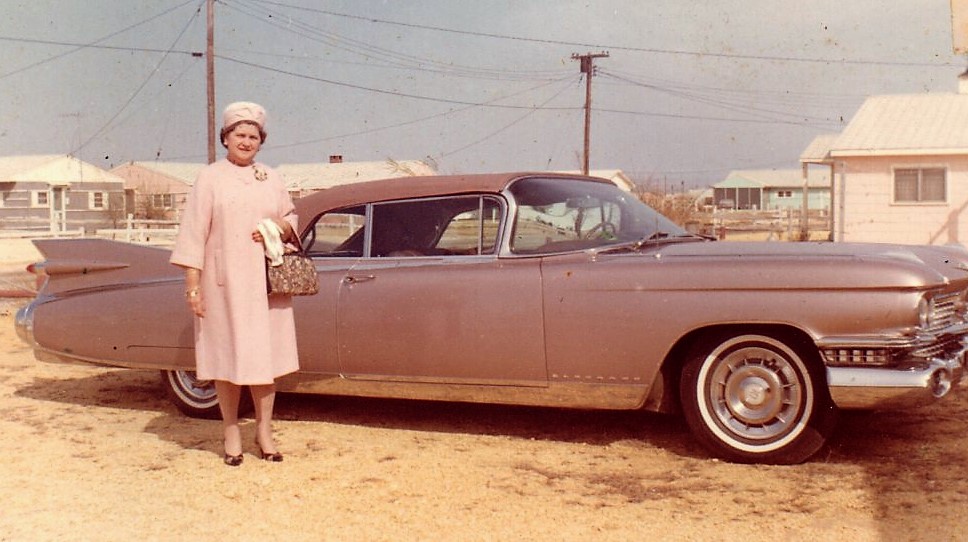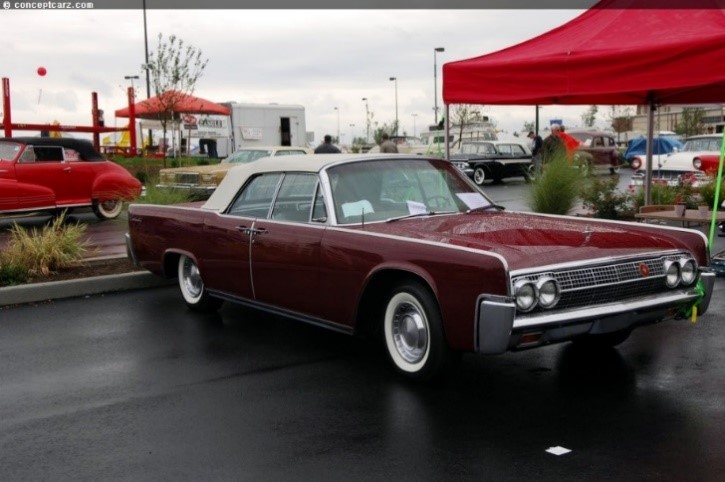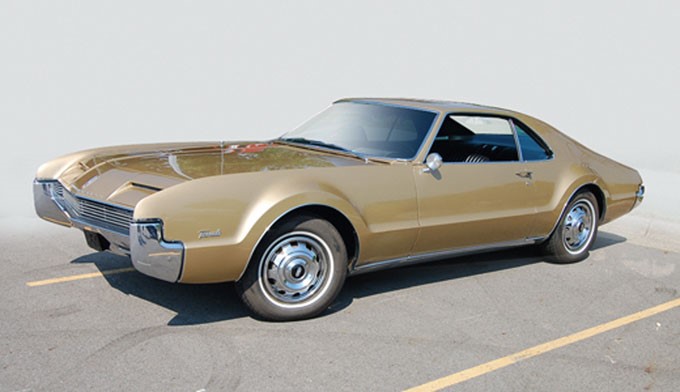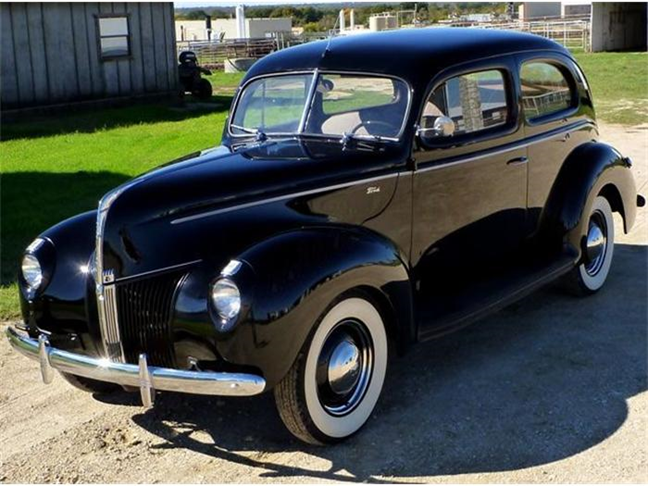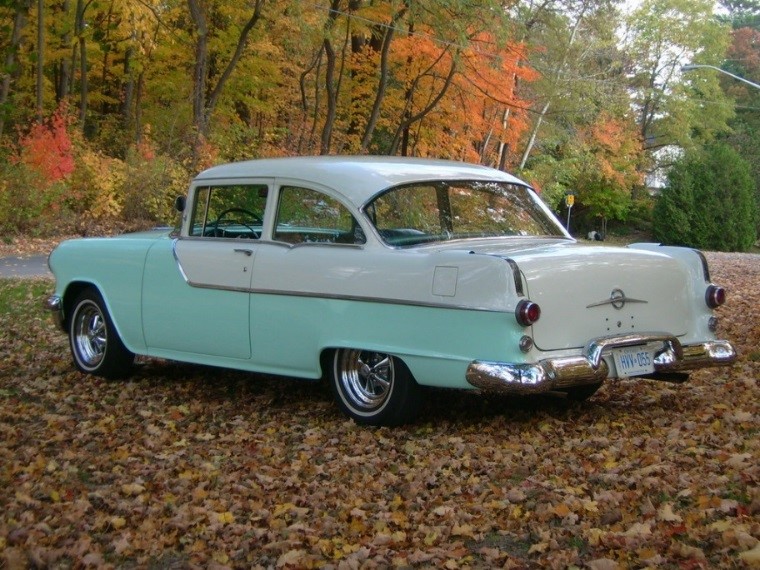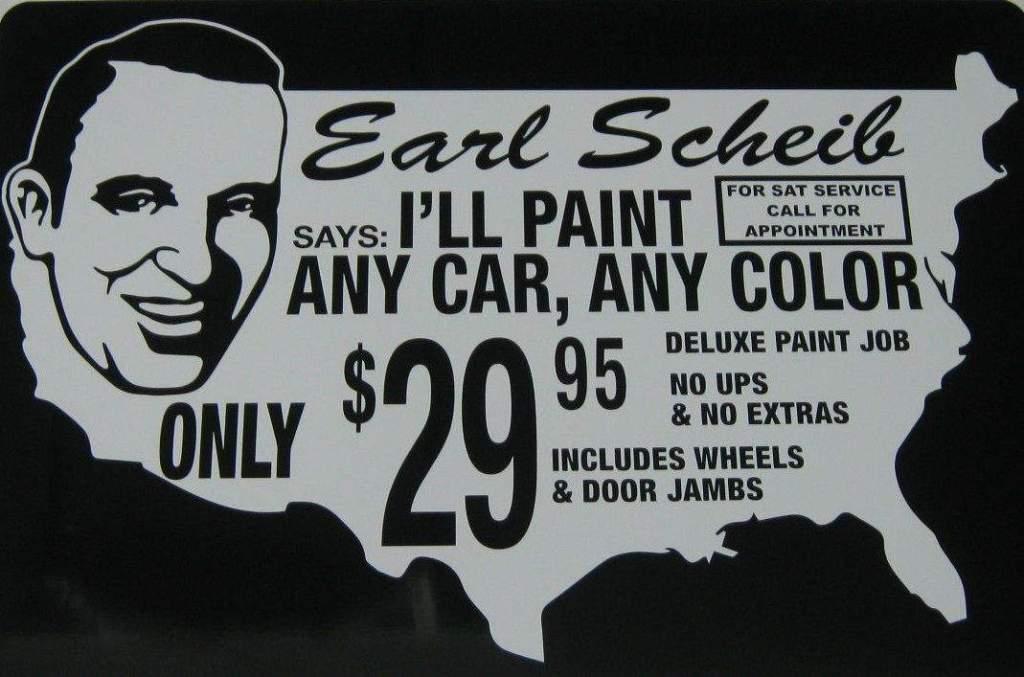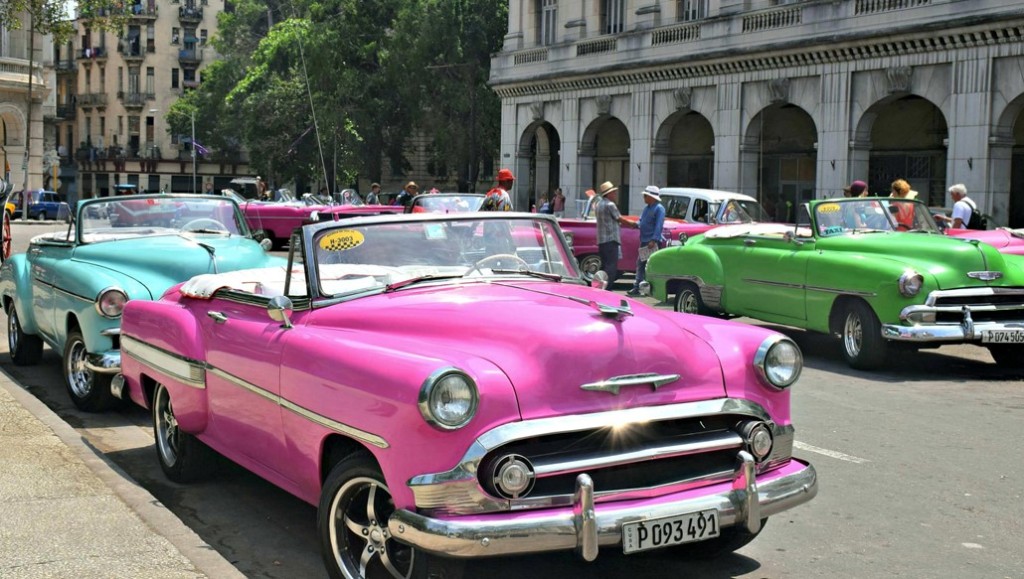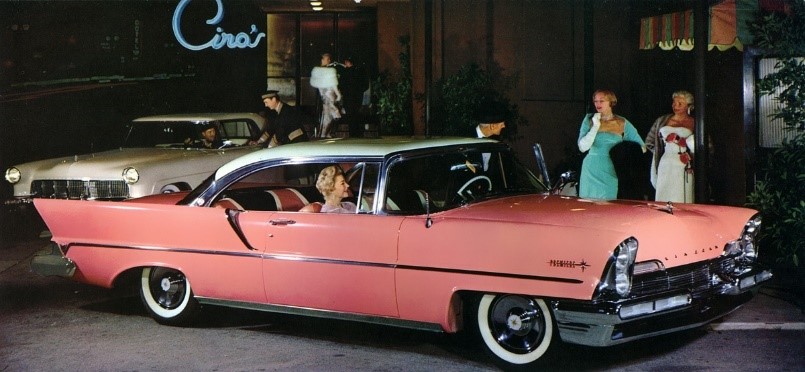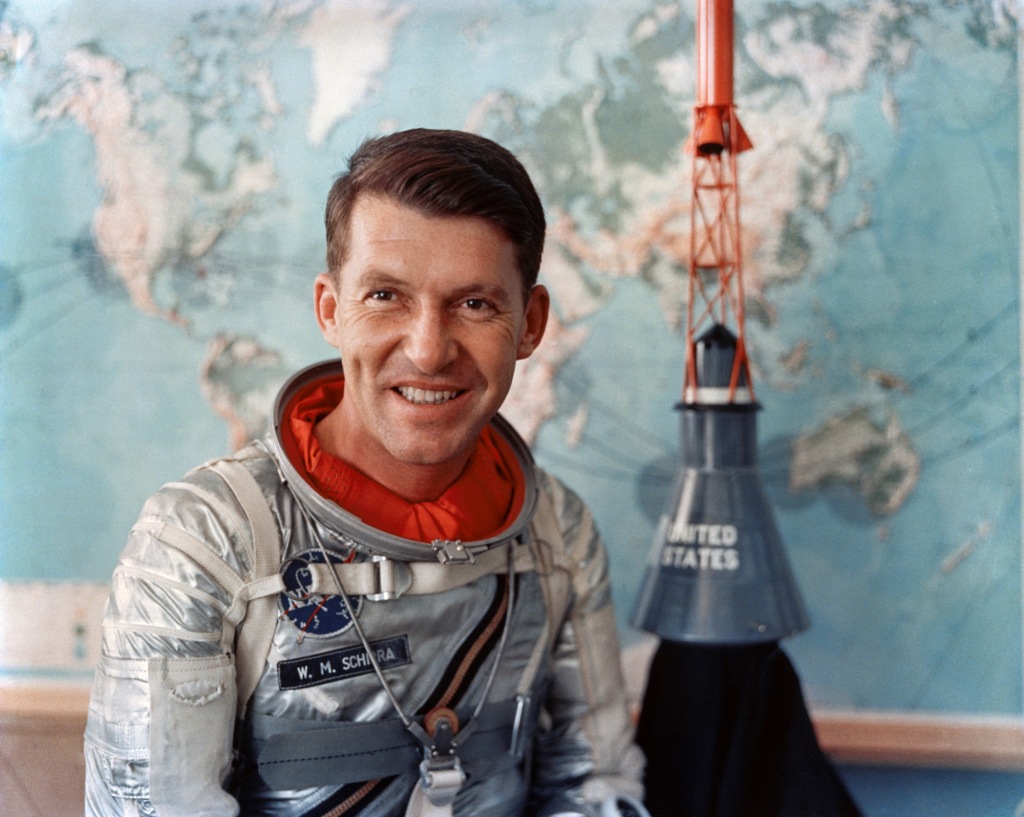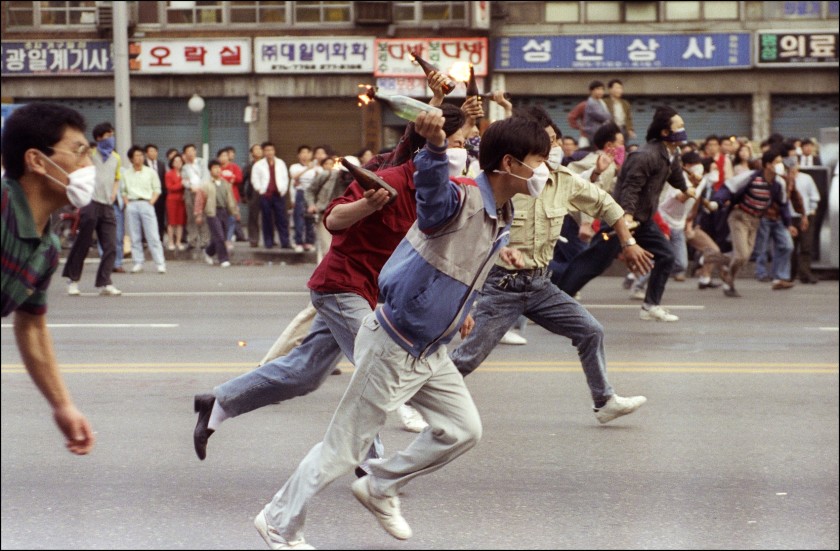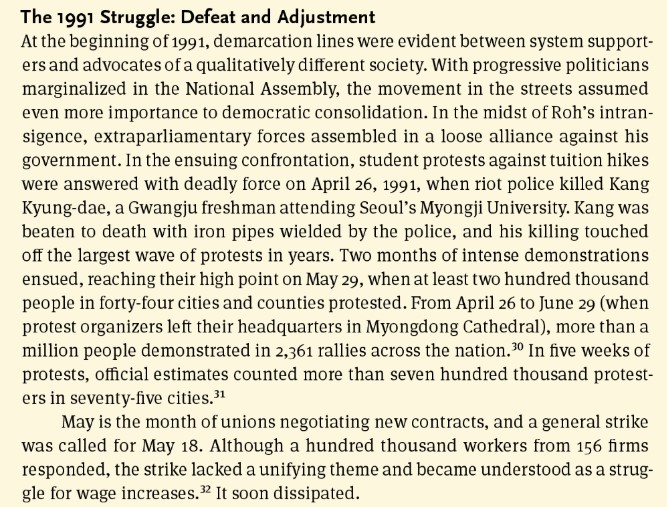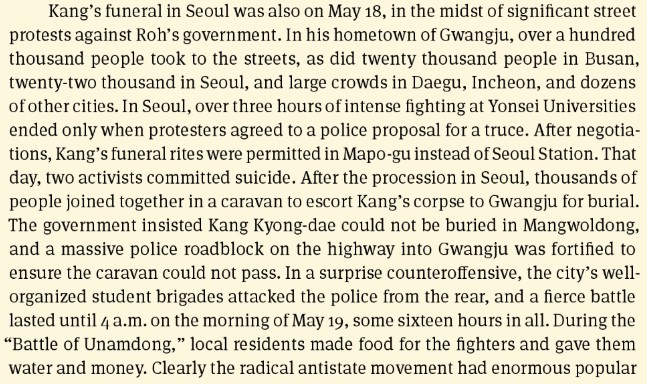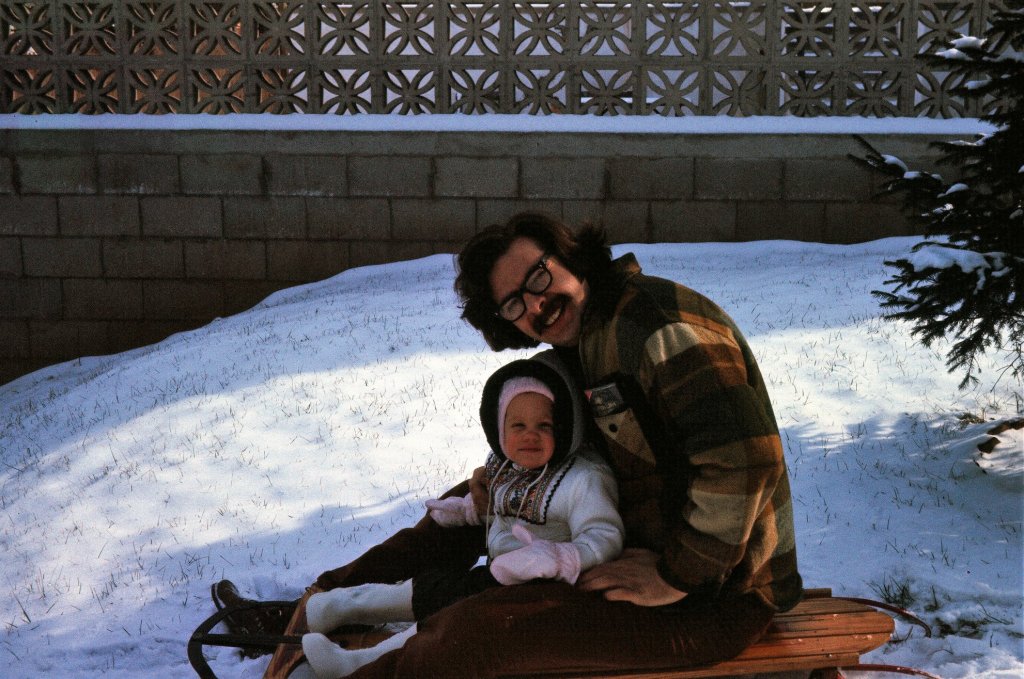Family tree – Link to the Gunardson Family Tree in Ancestry.com
The Gunardson branch of the family has been and continues to be a relatively small and ever dwindling group. For several reasons, a lot of the family history is shrouded in mystery. My Grandfather, Charles Johan Gunardson (1879-1940), passed away before I was born and my Dad’s older brother, Uncle Carl (Carl W. Gunardson, 1903-1961), passed away when I was about sixteen years old.
On my Mom’s side, (Ella Garrabrandt 1910-2007), some her sisters lived nearby when I was very young but moved from New Jersey to Florida and to a large extent lost touch. She also had two brothers, George in Chicago, IL and Henry, who lived in Los Angeles, CA. She had a few cousins nearby in Metuchen, NJ, but we only visited them on rare occasions.
My grandmother’s maiden name was Krebs (Ella Krebs 1888-1941). I recall my mom often talking about Grandma Krebs when I was very young. In any case, most of the family on both sides were widely dispersed geographically and also not very communicative on the topic of our family history. At least they weren’t when I was within earshot. So, unfortunately, I can’t provide a lot of detail on either the Gunardson or Garrabrant side of our family and their relationships or misadventures.
The best I can offer is a description of the events and relationships I personally experienced over my seventy plus years. The format I’ve followed is essentially a collection of essays or “war stories” in roughly chronological order to the extent I remember them. This format, an autobiography as a collection of essays, was appropriated from the autobiography of Mark Twain the master of American prose. Another one of my favorite author’s, Edward Abbey once said, “if you’re going to plagiarize, always plagiarize from the great and the dead, never the living and mediocre”. So that’s what I’ve done, plagiarized from the great and the dead, Mark Twain.
I hope you find it interesting and perhaps a little entertaining. I’ll begin this “tome” with another Mark Twain quote, “Biographies are but the clothes and buttons of the man. The biography of the man himself cannot be written.” So here it is; a description of my clothes and buttons for your edification and amusement.
From the Beginning…
Photographs of me as an infant are conspicuously absent from the family archives; there aren’t any cute baby pictures to fawn over. The reason is because I was adopted. The earliest photo of me is a professional portrait taken between the ages of two and three years old.
Figure 1 – Portrait of Hal Gunardson (about 1945-46)
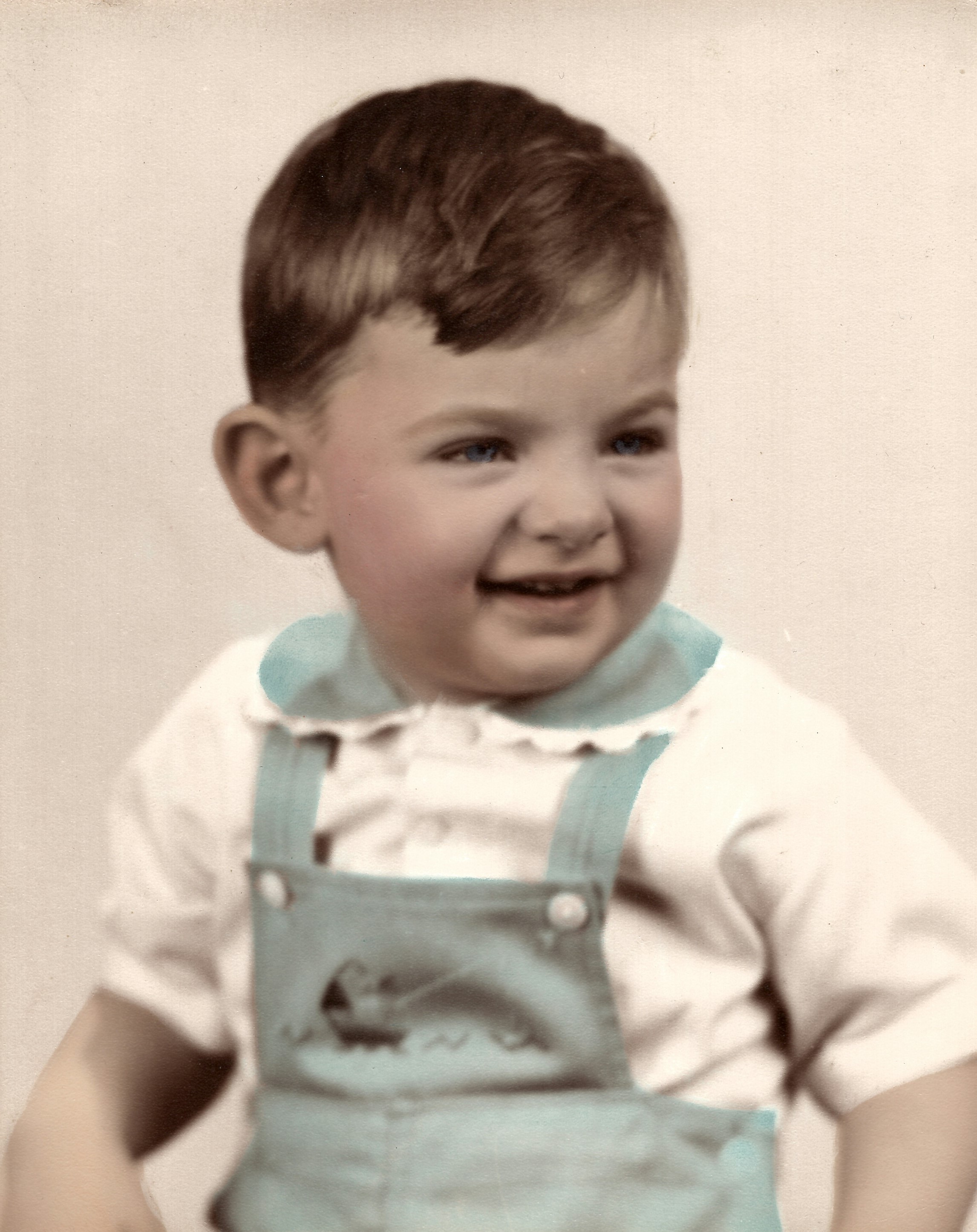
My parents adopted me when I was about two and a half years old on March 17, 1947 through an agency, Catholic Charities, in Newark, NJ. While I was growing up my mom never elaborated on the event except to simply say I was adopted, that’s all. However, after she passed, I discovered my adoption papers among her personal effects. They state I was born on June 19, 1944 in Newark, NJ to Helen Hendrickson (no father was listed) and my original christened name was Steven Hendrickson. Incidentally, the surname Hendrickson could be Dutch, German, English, Danish, Norwegian or Swedish; basically, anywhere a man named “Hendrik” would have a son. Could be Iceland too, maybe. Who knows? It doesn’t really matter.
According to the theory of “nurture versus nature” only the nurturing aspect is relevant in my case. The nature part is a mystery and will always remain so. It is one of the unknown unknowns. Parenthetically when I visit the doctor for periodic check-ups they always ask me “What’s your family medical history?” I tell them, “There is none, it’s zero. Just one less thing to worry about”.
So, the nurture phase began about the age of three when I was rechristened Harold Henry Gunardson; Harold after my adoptive Father, Harold Widegren Gunardson, and Henry after one of my uncle’s on my Mother’s side, Henry Garrabrant.
Uncle Henry
Uncle Henry (Henry Garrabrandt 1917-2000) was one of my mother’s favorite siblings. As adults, they lived a considerable distance apart but were always very close in spirit. My mom lived in New Jersey and my uncle Henry was initially stationed in Alaska with the military and after he retired from the Army he settled in California. I believe he attained the rank of Captain during his military career. Mom always spoke very highly of him with a kind word and a warm smile.
Figure 2 – Picture of my Uncle Henry and his wife, Evelyn

After he retired from the active duty in the service, he purchased a hardware store in Santa Monica, CA. It was one of those “old fashioned” hardware stores with the wood floors and the old-fashioned wooden bins for displaying merchandise. The store catered to both locals and celebrities alike and a photo in the family archive (**I’m trying to find it….Jill) shows my Uncle Henry in his store with one of his more famous customers, Ronald Reagan.
Henry was also a talented and accomplished singer and for many years sang with a choir at St. Paul’s in the LA area. Oh yeah, and he was also a member of mensa. Incidentally I purposely didn’t capitalize mensa. More about that later but in short, I’m not very fond of these kinds of organizations.
Dad’s Side – The Gunardson Family
My father, Harold W Gunardson (1905-1995) was a physically big guy. He stood six feet three when men of that era usually weren’t over six feet tall. He weighed in at about 240 pounds and because of his height, he actually appeared quite slim. In fact, among his peers his nickname was “Slim”. This is a picture of my mom, Ella, my dad, Harold and me as a young boy.
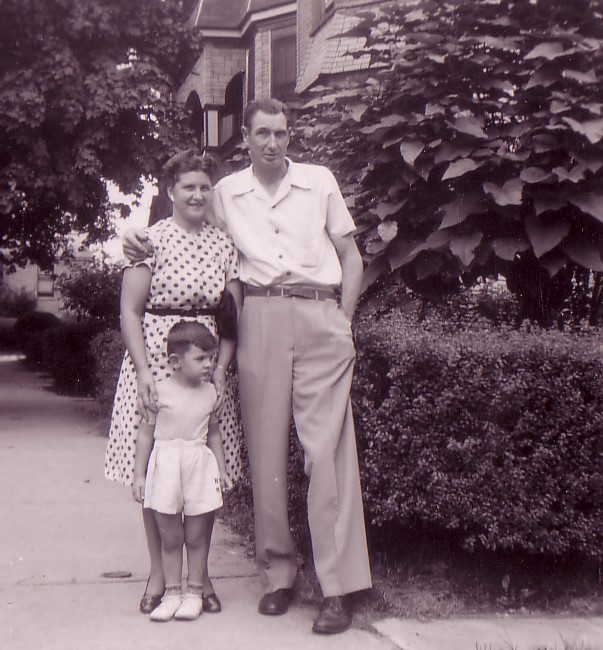
My Uncle Carl was bigger yet. He was about six feet five and probably close to 300 pounds. As a small boy, they both looked like giants to me. I was told my Grandfather was of even larger stature at about six feet six and over 300 pounds. He died in 1940, before I was born but photos of him confirmed his large physical size. This is a picture of my dad and Uncle Carl, when they were young. (**I am trying to find another picture of him as an adult.)
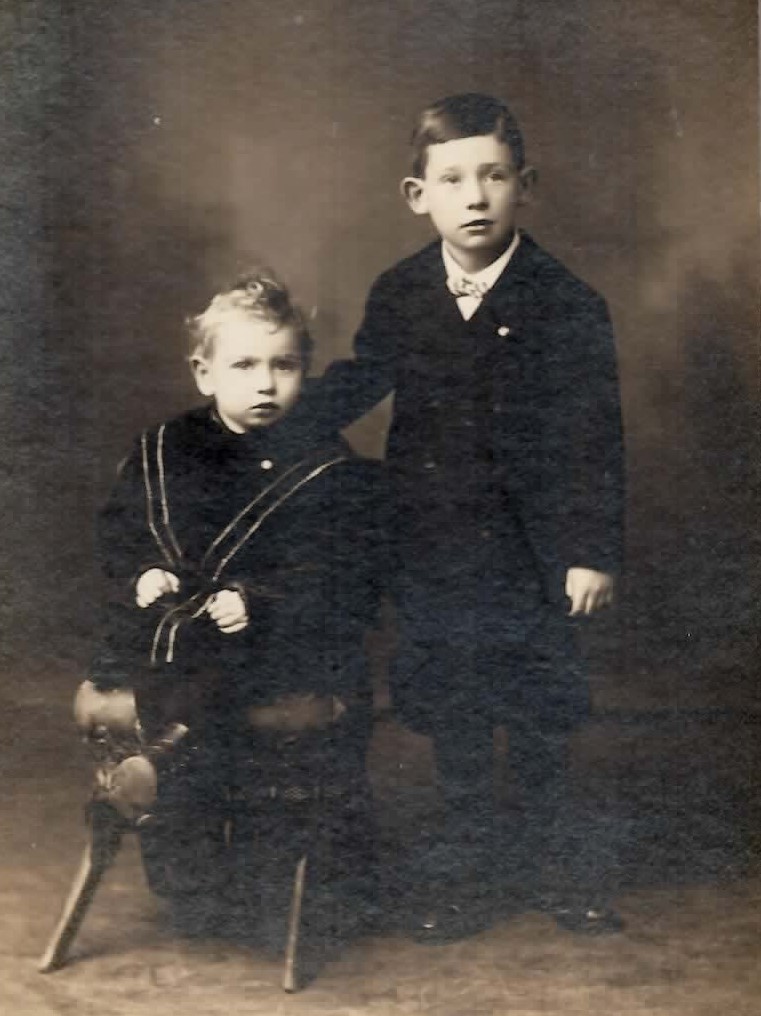
My Grandfather’s name was Charles Johan Gunardson (1879-1940) and my Grandmother’s maiden name was Louise Widegren(1867-1954), to me always just Grandma. My father was Harold Widegren Gunardson (1905-1995) and my uncle was Carl Widegren Gunardson (1903-1961). Apparently, it was the custom in Scandinavian families to use the mother’s maiden name as the middle name for the male children.
I was told in his younger day’s Uncle Carl was a merchant seaman and he certainly looked every bit the part. He always walked with a swagger, had a crewcut all his life and sported numerous “old school” tattoos, typical sailor’s tattoos, ships, anchors, mermaids and such. Although I actually have very fond memories of him. He was regarded within the family as kind of rough character.
I remember a particular instance when he took me for a day trip to Bear Mountain in NY when I was about five years old. Every few miles he would pull off the road, get out of the car, open the trunk and fetch a warm bottle of coca cola. When he returned, he would pop open the bottle, hand it to me and tell me “take a couple of swigs”. After about two gulps he would take the coke bottle back, reach under the front seat for the bottle he stashed there and fill the coke bottle to the top with rum. This was repeated every few miles all the way to Bear Mountain and home again. I never actually got to finish a whole bottle of coke. This is a picture of Bear Mountain in the fall.

Bear Mountain is not far from the west bank of the Hudson River and on the way home Uncle Carl made a detour to check out the river. There was a tugboat at the dock and my uncle got out of the car and struck up a conversation with the captain. The next thing you know we were invited aboard, and I got a chance to go up on the bridge, sit at the helm and peer out at the river from that lofty vantage point. That made a huge impression on me and was the high point of that road trip.
This is a picture of a Tug Boat at Bear Mountain.

Years later in my fifties while I was sailing in the Carolinas I befriended a delivery Captain named Woody Wilkerson who had previously been a tugboat captain. One day, I asked him what qualifications you needed to be a tugboat captain. He answered, “First, you got to been in jail.” I think that summed it up pretty well.
When my Mom was in her 90’s she was talking about family history on my father’s side and she exclaimed, “You’re Uncle Carl, nobody ever tamed him.” She needn’t have said any more. That described it pretty much as I remember him.
Figure 3- Article in Paper – Carl Gunardson
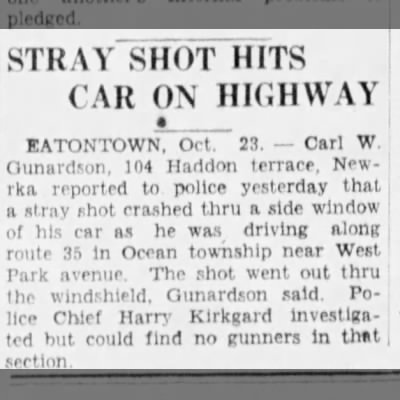
I also recall my father and Uncle Carl didn’t seem to get along too well. They were generally amiable when they were together but that wasn’t very often. According to Mom, the reason Dad wasn’t fond of his older brother was in their younger days, when my Dad owned his gas station and they were in business together Uncle Carl would frequently fail to show up and put in his hours. When he did show up it was often with one of his current “girlfriends” (aka Honky-Tonk Specials). They would hang around for a while, then disappear. Carl wouldn’t be seen again for several days or sometimes weeks. My Dad never talked too much about it. Except indirectly, by telling me several times during my teenage years, “Don’t ever get into a business partnership, a partnership is the worst ship afloat.”
Carl was married to Bertha Nilsson (1897-1986), a Danish immigrant, who spoke with a heavy Scandinavian accent. She was a member of the local Scandinavian club and associated mostly with Swedes and Danes, who always spoke their native language at their meet ups. As a result, Aunt Bertha never really learned to speak English very well and as she got older, her English language skills diminished. Although her voice always sounded very pleasant, I had a hard time understanding her with her “sing-song” Scandinavian accent.
Uncle Carl and Aunt Bertha had one child, a daughter Norma Gunardson (1922-1992). She married a man, James Munro from Newark, NJ. There is some mystery to this story and my mother really did not want to talk too much about it.
Norma married James Munro in Santa Ana, California on October 31, 1942. Uncle Jim had just enlisted in the 1074th Army Air Force, Base Unit in June 1942, achieving the rank of Corporal in Squadron “A”. He was eventually honorably discharged in December 1945 and subsequently passed away in October 1947. His wife, Norma was the one who applied for the military marker for his burial site in Union, NJ. She signed the application as Norma Munro and it is dated November 1947.
I don’t remember Jim and I was told he died before I was adopted. The story was he was in the Army and killed in action in the Second World War. This really didn’t add up since World War II officially ended with the surrender of Japan in August 1945 and I was adopted in 1947. And there is also the photo in the family archives of Jim with a winter coat on holding me in his arms outside the Walker Avenue house and my Mom would frequently tell me while I was growing up how Jim loved me very much. I think the WW II story about Jim was one of my Mom’s “white lies” as she called them when for whatever reason the real truth was to too embarrassing or otherwise to be avoided.
Figure 4 – Harold W. Gunardson, Grandma Gunardson, Carl Gunardson, Baby Hal, Jim Munro
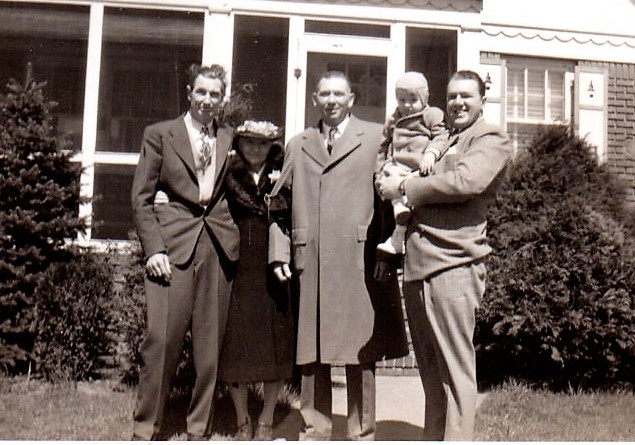
Mom’s Side – The Garrabrant Family
On my mother’s side, my mom was the oldest of seven children and she told me her father, Henry (Gary) Garrabrandt (1886-1929) died at a young age; in his late thirties as I recall (aged 43). She had two brothers, Henry (Gary) and George and four sisters (**Note from Jill: Marie, Margaret, Lyda and Mildred).
One of the oldest sisters, Marie, died in 1930, well before I was born. The youngest sister, Lyda (1913-1947), died in her thirties from Leukemia. The second oldest, Marguerite, moved to Florida when I was very young and I never really knew them or their children.
I understand that one of those sisters (Marguerite) was married to a very wealthy gentleman who was an heir to the A&P supermarket fortune and they lived on a large estate somewhere in Florida. I believe it was in Palm Beach. When I was about six years old we took a road trip to Florida and visited them for a day or two. That was the last time I ever saw or heard from them.
Her other sister was my Aunt Millie (Mildred), who I called Aunt Minnow since at the age of three. I was unable to properly pronounce Millie and when I tried it somehow emerged as Minnow. My mom and Millie were very close. Aunt Millie loved the nickname Minnow and insisted I continue to call her by that nickname which I did the rest of her life until she passed away in her 80’s in Miami, Florida, where she and her husband Bill had retired.
Her married name was Shuster and she had two children, Duke and Jane. Her husband Bill Shuster was an amateur musician and had a recording studio in his home in New Jersey. He named his son Duke, after Duke Ellington, the famous jazz musician of the era, and encouraged him to become a professional musician.
Duke played the trumpet and was quite good. Back in that era there was a popular TV show called “Ted Mack’s, Original Amateur Hour”; the equivalent of American Idol of its time. Duke won it two or three times in a row. He subsequently went on to become a professional trumpet player and although successful never achieved super star status. He was a couple of years older than I and naturally I looked up to him like a big brother. As a result, I also took up the trumpet in grammar school but really didn’t have any natural talent and eventually gave it up a few years later.
Duke started his musical career in Florida at the big resort hotels in Miami Beach. (**Note from Jill – our family took a trip to Walt Disney World in Orlando in 1978. We paid a visit to one of their fancy restaurants where Duke was playing as part of the Big Band entertainment. We spent a few minutes to say hello – I remember it like it was yesterday).
Duke eventually moved to Las Vegas and played with some of the big-name bands there in the 1950’s and 1960’s. He was married, or whatever, to a Las Vegas showgirl, and they had a daughter, Audrey. At a very early age Audrey was sent back to Florida to live with my Aunt “Minnow” who raised her to adulthood. Amazing, that as an adult, Audrey turned out to be a real homebody and “solid citizen” unlike her father Duke and her mother Jane who were also raised by my aunt “Minnow”. In her later years, my Mom and Audrey always kept in touch and eventually became very close.
I think Duke passed away in his early fifties in Philadelphia, PA where he was taking music lessons from a famous music teacher there. The rumor was he died from a combination of drug addiction and AIDS.
Jane, Duke’s older sister was regarded by my Mom as a ne’er-do-well and I never got to know her very well. She was married (or whatever) at a fairly young age to a guy named Ace. I think Ace was a biker dude. Jane and Ace subsequently took off for parts unknown and was basically never heard from again.
There was an amusement park not far from our house on Walker Avenue in Irvington, New Jersey called Olympic Park. It featured a roller coaster, a Ferris wheel, other amusement park rides; as well as the usual concession stands and an Olympic size swimming pool with a separate smaller pool for younger children. Aunt Minnow would frequently take me there for day trips sometimes with my Mom and sometimes it was just Aunt Minnow and me.
They are some of my fondest childhood memories. It included my first ride on a roller coaster, my first ride on a Ferris wheel and numerous other firsts including my first opportunity to fire a rifle. Back in those days, amusement parks featured shooting range concession stands. There were various pop up targets and about five or six 22 caliber rifles chained to the counter. For five cents or so you could shoot at the pop-up targets and score points for prizes. Can you imagine such a thing today? Don’t even think about it. But back then it was regarded as harmless amusement for a six-year-old.
The archival photos of my early childhood were taken at the house on Walker Avenue in Union, New Jersey where I was raised until my pre-teens. Photos in my later teen years are at the Tyler Street house, also in the small suburban town of Union, New Jersey. Tyler Street was where I lived until I was in my early twenties and married.
Figure 5 – Walker Street House
